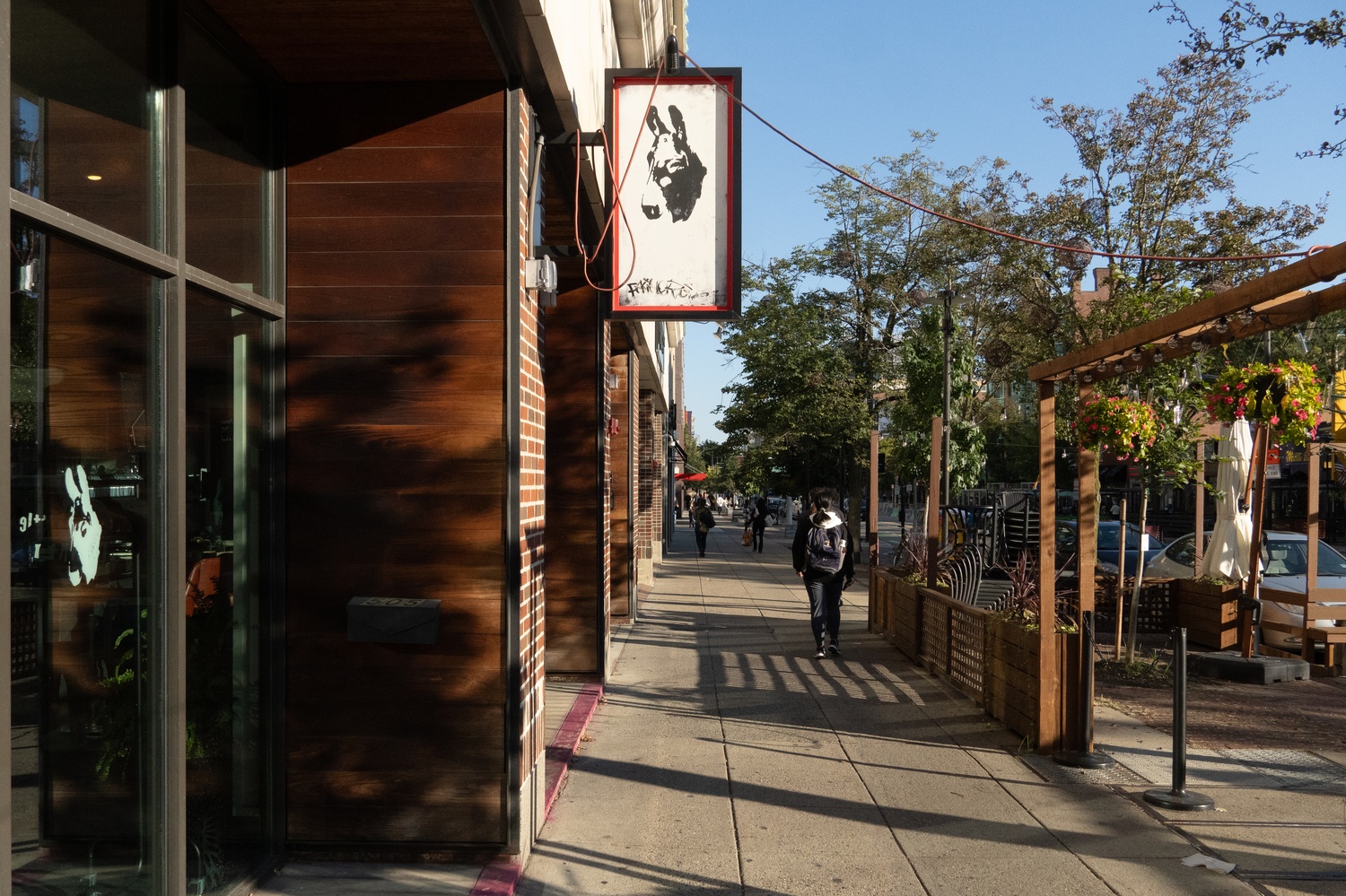
News
Summers Will Not Finish Semester of Teaching as Harvard Investigates Epstein Ties

News
Harvard College Students Report Favoring Divestment from Israel in HUA Survey

News
‘He Should Resign’: Harvard Undergrads Take Hard Line Against Summers Over Epstein Scandal

News
Harvard To Launch New Investigation Into Epstein’s Ties to Summers, Other University Affiliates

News
Harvard Students To Vote on Divestment From Israel in Inaugural HUA Election Survey
Little Donkey Review: Central Square’s ‘Global Tapas’ Restaurant
Chef Ken Oringer – 4 Stars

Nestled in the heart of Central Square, missable if it weren’t for the subtle sign that makes it just visible to passersby, is Little Donkey. The restaurant, founded by James Beard award-winning chef Ken Oringer in 2016, serves what it calls “global tapas” — small plates distinguished by their fusion of flavors and different cuisines. With its menu of bites like Brazilian-inspired steak tartare and a Korean take on mac and cheese, Little Donkey is all-encompassing and welcoming to all eaters and every palate.
Once inside, Little Donkey’s atmosphere appears reflective of its culinary philosophy. Guests are greeted by a Pride flag as soon as they walk through the door, and the air bops with ’90s hip-hop and R&B tunes loud enough to create a lively environment, but quiet enough to allow for conversation among eaters. Bright and colorful artwork acts as a contrast to the industrial brick walls, and the lighting is dim without making menus or plates indecipherable. The service is quick, and the waiters are extraordinarily friendly — all of which make for a positive dining experience.
Little Donkey’s “global tapas” are designed to be shared among guests. The restaurant recommends ordering about two to three dishes per eater, but the expansive menu might result in ordering double or triple that. Plates arrive at the table as soon as they are ready, but eaters soon settle into the pace and rhythm of the service.
A popular place to start at Little Donkey is with their “crudos” – plates of raw fish and assorted accouterments. The tuna and salmon belly tartare is a standout on this section of the menu, with buttery fish piled onto a bed of crispy sushi rice and topped with a healthy amount of tobiko. The rice could have done with more time in the pan to ensure a better texture contrast, and some acidity would have brightened up the otherwise rich flavors. However, this dish is still an excellent choice for sushi lovers looking for an upscale rendition.
Next on the menu is Little Donkey’s “snacks” – essentially their appetizers. One of their most popular snacks is the caviar sandwich, in which sturgeon caviar is piled onto a pillowy potato roll with a thick schmear of herb butter on both sides. The sweetness of the roll perfectly complements the brininess of the caviar, and the sandwich is the ideal size to provide a taste of indulgence without overwhelming the tastebuds with too much richness. The sandwich is served on a logoed piece of wax paper that makes it feel as though it’s from a local burger joint – a playful take on caviar that makes the delicacy feel accessible to even the most broke of college students.
Another favorite snack is the shrimp toast bao bun. Unlike a traditional bao bun, Little Donkey’s iteration is fried, giving it a crisp-on-the-outside texture that pairs nicely with the soft shrimp. The BLT lettuce wraps are also great, yet they can be a little heavy for an appetizer due to the house-made lamb bacon and pimiento cheese inside.
A surprising standout from Little Donkey’s “veggies” section is the roasted carrots — the quintessential example of fall warmth and flavor. Influenced by Mexican cuisine, the carrots are topped with a smoky pepita mole, a honey drizzle, a tangy avocado crema, and a dusting of crunchy pepitas on top. They excel in their balance of sweet and spicy, warm and cool, and soft and crisp. A seasonal dish, the roasted carrots are a must-order if present on the menu.
The most disappointing item on the menu is unexpectedly from the “meat & fish” section, specifically the fried cod cheeks that are served on a bed of white corn purée. The breading on the cod overwhelms its delicate flavor and is a bit too thick and chewy. Even when combined with the sweet corn, the dish falls particularly flat; perhaps a sweet or acidic hot sauce could brighten it up.
As far as the entrées go, the star is the cacio e pepe; their rendition is an Italian-Asian fusion dish that perfectly represents what Little Donkey strives to do. Rather than the traditional spaghetti noodles, Little Donkey makes their cacio e pepe with ramen, and the peppery parmesan sauce includes a hint of miso, providing a rich umami flavor.
Little Donkey’s desserts are not to be missed. Unlike other fine-dining restaurants, which often serve pretentious and unappealing sweets, Little Donkey caters to their audience, serving homey classics with an elevated twist. The miso brownie sundae, served with a heaping scoop of French vanilla ice cream, is the perfect example. The miso adds a richness and saltiness that balances out the creamy sweetness of the brownie and ice cream. Even more, the yuzu adds an unexpectedly pleasant tartness to the dish.
Little Donkey represents the untraditional within the traditional, fusing flavors from various cuisines. Their menu reminds eaters of the importance of finding collaboration between cultures, instead of isolating them. For a creative and eclectic mix of flavors, Little Donkey is just a trot, a skip, and a jump away.
Want to keep up with breaking news? Subscribe to our email newsletter.
